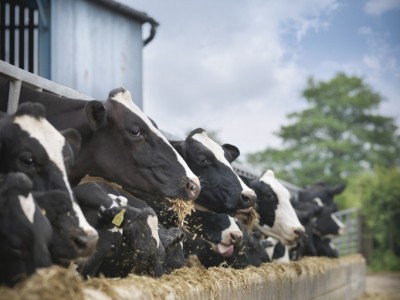Environmental footprint of feed: dsm-firmenich looks to support industry on Scope 3 reporting

The EPDs provide technical documents that communicate the full environmental footprint per kilogram of dsm-firmenich’s products across 19 impact categories from raw material sourcing to manufacturing in line with the EU Product Environmental Footprint (PEF) methodology, it said.
The vitamin player said it ensures the credibility of EPD data through rigorous processes, including using primary data and third-party assurance. All results undergo third-party assurance by DNV Assurance, confirming compliance with international life cycle assessment (LCA) standards (ISO 14021:2016).
LCAs comprehensively evaluate a product's environmental impact throughout its entire life cycle, considering factors such as raw material extraction, manufacturing, usage, and disposal. In contrast, EPDs summarize the results of LCAs for specific products, providing standardized and verified information on the environmental impact from "cradle-to-gate." EPDs offer producers a consistent and understandable way to communicate their products' environmental performance, according to dsm-firmenich.
Transparency
The EPD initiative is about boosting transparency for the value chain, delivering the detailed footprint of a product, what goes into manufacturing it in terms of its environmental impact across several categories such as carbon footprint, energy consumption, water usage, waste generation, and emissions, explained David Nickell, vice president sustainability and business solutions at DSM, on a call with this publication last week.
“It is about providing information to the end users of the product, the feed mills, who are also trying to understand what their Scope 3 emissions are, [trying to determine] where their emissions are coming from in terms of manufacturing feed, and a lot [of those emissions] come from the raw materials that they are buying in, whether that is a feed additive or whether it is the big macro ingredients like corn and soy.
“They need to understand what the impact is of each one of the inputs going into their formulations. By understanding that, they can calculate what the environmental footprint of their feed product is, which, evidently, contributes to the environmental footprint of the final animal protein product.”
The data is provided in a way that facilitates their integration into end users’ systems. “These data are more accessible and in a format that is more usable for our customers. Also, we are putting context around the numbers,” said the sustainability lead.
Feed manufacturers need to process so much data today to get on top of their footprint. “They need to get down into the granularity by product. And every product has a different environmental footprint. How we manufacture a vitamin will be different to how another company does so. If you want to report footprint accurately and really understand what is going on, then you need to have that data in your hand. And not every company provides that data.”
He maintains that dsm-firmenich champions sustainability in all aspects of the business.
“We are advanced in terms of our manufacturing capabilities. Our processes have been improved over the years to ensure they have low environmental footprint,” remarked Nickell.
Measuring and understanding the environmental footprint of animal protein production allows producers to identify and implement improvements that enhance efficiency and sustainability. An effective climate strategy requires the supply chain to understand its emissions. Scoping allows all stakeholders to do so.
And a significant amount of the carbon emissions from raising livestock are associated with the production of the feed.
“The [desire] to understand the footprint of animal protein is accelerating worldwide, in all markets and species. Downstream value chain players are very aware that they must reduce their emissions, particularly their Scope 3 emissions, and 80% to 90% of a retailer’s emissions, for example, are those associated with animal protein, with most of those [generated] at farm level. So, the downstream companies are keen to get on top of that, to meet their commitments,” added Nickell.















